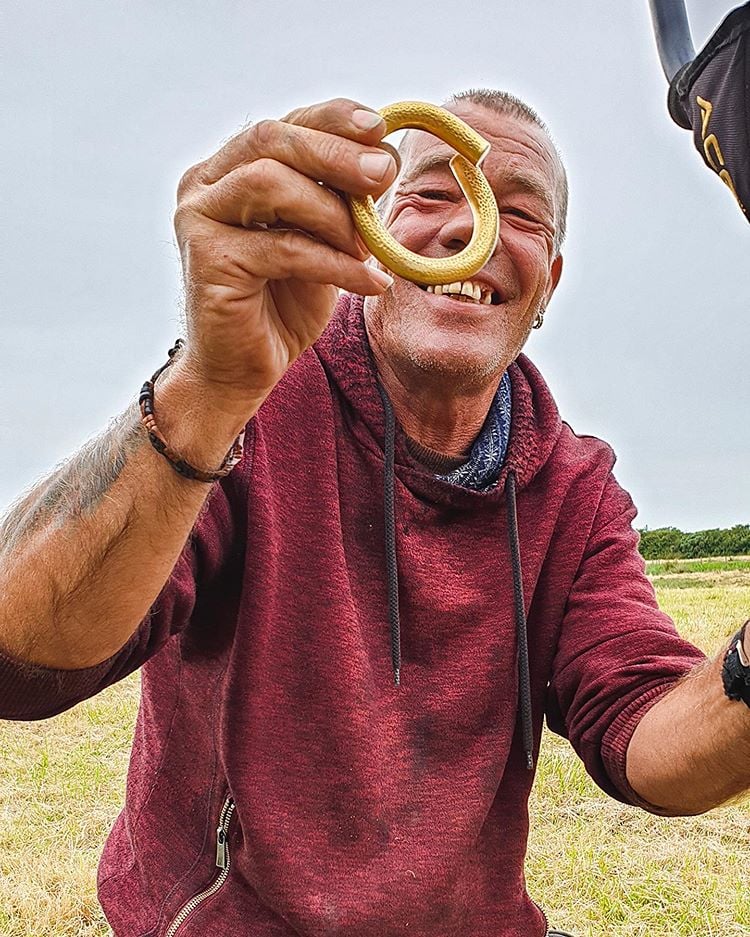Art World
While Out for a Walk, an Englishman Stumbled Upon a 4,000-Year-Old Solid Gold Treasure
The 22-carat gold piece of jewelry dates back to the Bronze Age.

The 22-carat gold piece of jewelry dates back to the Bronze Age.

Caroline Goldstein

Billy Vaughan, a hobbyist metal detectorist, was out for a walk in his hometown of Whitehaven, England, when he stumbled upon the discovery of a lifetime: a 22-carat solid gold band dating to the Bronze Age.
A care worker by day, Vaughan had taken to strolling around the town in Cumbria, a remote port on England’s western coast, with a metal detector. It was a few hours into one recent walk that he got a “strong signal” coming from the earth below, he told the Daily Mail.
When he uncovered the metal about five inches below the ground, it turned out to be a circular piece of jewelry known as a torc. Initially Vaughan thought it was “a piece of climbing equipment, or perhaps coupling from a tractor.” In fact, the thick, rod-like object was 11 ounces of solid gold, dappled with small indentations and slightly folding over itself, with one terminal overlapping the other to allow for an opening. Torcs have historically been worn as an indicator of great wealth and social status.
When a friend told Vaughan to take the object in for appraisal, a local jeweler told him that the gold alone was worth around $13,000, but that its historical significance would add value. Vaughan got in touch with the local museum, which will make a ruling to decide if it constitutes “treasure” based on the Treasure Act of 1996. If so, the government’s Treasure Valuation Committee will set a price and he must first offer it to a museum for purchase before finding a private buyer.
For Vaughan though, it’s an exciting find no matter what the ruling. “I try not to get ahead of myself and think about the money,” he told the newspaper, “To think I was the first person to hold that torc in who knows how many years is quite something.”